Twins from a parallel universe

In today’s installment, Emma rides a magical unicorn through a field of butterflies and some north going Kiwis meet some south going Kiwis for some classic Seussian confusion.
More or less, anyway.
Back when we first started our trip. (This is sounding like a long post now, isn’t it?)
Our first stop had been Overland Expo, where we met Will and Rochelle (Kiwi Panamericana) who had recently completed their Pan American road trip from Ushuaia to Deadhorse. Rochelle told us about some folk who were starting their travels down south and heading north. It was another Kiwi couple, they had started their journey just over a week before us. Their names were Melissa and Derek.
As we were planning our trip to Cerro Pelón to see some Monarch butterflies, Melissa and Derek were camping in Teotihuacan. We had hoped to cross paths soon and this sounded like a good opportunity. However, with 56,000 hectares of butterfly reserve and several towns to access it from, we weren’t sure whether the plan “We’ll meet you at the butterflies” was going to pan out.
Luckily when Melissa sent through the GPS co-ordinates of their planned campsite, it appeared to be in the same area we had arranged to drive to with Paula and John. Excellent.
Paula and John (Our Bigger Picture) had plans to head to the Monarch Butterfly reserve at a similar time to us. When we suggested we travel in convoy they were surprisingly keen. They had obviously not acquainted themselves with Javier (our wayward GPS).
Fortunately, we had recently invested in an amazing thing. A map. An actual paper map.
Between the information contained in said paper map and the superior navigational equipment owned by Paula and John we found our way to the town of Macheros. Right on the edge of the home of the Cerro Pelón Butterfly colony.
We had been told of a few options for camping within the very small town: The grass outside a restaurant. A nice B&B that would let you camp if they had an available room and the parking lot at the entrance to the butterfly reserve.
We were a bit vague on whether the parking lot had a bathroom at all, so we thought we’d try our luck with the B&B first. As we rolled to a stop outside the B&B, a woman came out to greet us. The New Zealand T-shirt was a giveaway, the accent was certainly a familiar one and the fact that she knew my name was Emma pointed to the fact that yes, this was indeed Melissa.
From a very brief conversation we gleaned that the B&B was full, the parking lot by the entrance did indeed have bathrooms and even a hot shower (A notch up from ‘parking lot’ in our books). That was where the other Kiwis would be camping for the night.
Sold.
The ‘parking lot’ was in fact a pretty perfect spot to camp, we will actually upgrade it’s name to the ‘campground’. It even came with an inquisitive, although timid dog.
It became pretty clear, early in the first evening, that either Emma or Paula would be stealing this dog if we stayed much longer than two or three days.
When Melissa and Derek returned to the campground, we began the important task of checking out each other’s travelling rigs.
It transpired that they were also driving a silver Toyota 4Runner, with a rooftop tent. As well as having been on the road since almost the same time the previous year, they even had the same type of fridge (a very important piece of kit). Clearly twins from a parallel universe.
I’m not sure that Paula and John had known what they were getting themselves into. Their time camping with the Kiwis left them with an expanded vocabulary—handy dandy words like ‘jandals’, ‘chilly bin’ and ‘wop-wops’. We think Paula and John also now fully appreciate that it isn’t just us who completely misuse all vowels and finish every sentence with an upward inflection as if it were a question.
Ultimately, outnumbered two-to-one by folk from our tiny island nation, the Californians got into the spirit of being honorary Kiwis. They embraced some more general concepts, like tramping not being something dodgy and everything being ‘sweet as’. (Tramping = Hiking for anyone not fluent in Kiwi.)
For us, it was great to hear a familiar accent, although it did remind us how weird we sound to the rest of the world. (“Oh yeah—that’s why no one can understand us!”) It was even better to meet a couple heading north with a long list of advice and suggestions for places to stop at on our way south.
As is always the case meeting other travellers, it was immediately easy to find common ground. We were all having a yarn about experiences we’d had on our separate journeys, what got us started on our trip, what we miss from home, what we don’t miss. The commonalities and similar experiences always leave you feeling like you aren’t travelling alone at all. Sometimes it seems as if everyone is just experiencing a small part of some grander, shared adventure.
It even turned out that in the small world in which we live, it was our friends Gunter and Sissi (Alaska Wilds) who had suggested this particular location to Melissa and Derek.
The adventure for the next day was to see these famous butterflies we had all driven so far to see.
The winter home of millions of North America’s monarch butterflies, the sanctuary is probably the premier place in the world to see a Monarch Butterfly.
Or two.
Or several thousand.
The amazing thing about this sanctuary is the journey these butterflies undertake to get here. These delicate winged creatures make this journey from the eastern USA and as far north as Canada.
The flight south is made by one generation of butterflies, the return journey for the summer takes several generations to complete. Thus, the returning generation of butterflies the following year makes its way to Mexico having never seen their planned destination, perhaps their grandparents share one or two photos from their trips?
They don’t even have tiny copies of the Lonely Planet… They just get out there and start flying, always returning to the same locations as their fluttering forefathers.
In the chill of winter, they practically hibernate, spending the cold nights and cool mornings huddling together in the trees for warmth. They do this in such large groups that they weigh down the branches of the trees.
As the warm afternoon sun reaches the butterflies, particularly at the end of the winter season they take flight, dancing about in the skies in clouds of thousands.
Finally, after a childhood of disappointment at lack of resolution in the book “Where does the butterfly go when it rains?” I feel like I have a definitive answer—Mexico.
Sadly, this is one of those spectacular natural phenomenon that even as you are witnessing it, you are aware of its fragility. We were acutely aware of how our very presence there could be a reason that butterflies in these numbers might not be around for future generations to enjoy.
We were at one of the lesser touristed areas, so it was just our group plus a handful of other people in the reserve when we were there. From what we understand though some of the more heavily visited areas are actually showing a significant decline in their butterfly populations.
This is partly due to the steady stream of noisy, dusty, butterfly trampling tourists disrupting the butterflies winter snoozes. Although other causes also come into play such as logging and destruction of habitat both within Mexico and in the butterflies summer homes in the USA and Canada.
But our particular group of butterfly-trampling tourists were heading up the hill today.
John was still recovering from a foot injury and Melissa and Derek weren’t sure whether a horse might be helpful for the steep hill climb to the sanctuary. As a group we opted to hire one guide and two horses as a back up, in case someone needed them.
When we were leaving with the guide, it became apparent that two people were going to get to ride the horses from the outset, the horses weren’t going to get off scot free, they had work to do.
Nobody seemed particularly keen about riding said horses though. No one had done any walking yet, everybody was still full of zest and enthusiasm. There were mutterings about “not burdening horses”, “stretching legs”, “getting a bit of exercise”, that sort of thing.
This complete lack of interest in the horses is how Emma and Melissa ended up riding magical unicorns up the mountain paths to the butterfly reserve. Everyone else walked.
The journey up the steep hill was magical and relaxing. Bathed in the delicate, dappled light that passed through the shifting leaves, the forest had a magical storybook quality to it.
As we got closer to the top of the hill, the landscape changed, the trees were punctuated by bursts of brightly coloured flowers. The scent of spring-time, of blossoms heated in the gentle morning sun filled the air. Brightly coloured butterflies darted from flower to flower.
This perfect and tranquil scene was only ruined by the grumbling slackers walking up the hill behind us. “Are we there yet?”, “This is steep”, “Whew, can we stop for a bit of a break?”
Not sure what they were complaining about, we didn’t even work up a sweat.
No matter how needy and complaining the foot-peasants had been. It was agreed by all that the butterfly reserve itself had been well worth the casual six kilometre uphill jaunt.
That evening, Derek decided that he wanted to catch and eat some trout for dinner.
Catching the trout proved to be a lot simpler than we had expected when we first heard this suggestion. There was a trout farm a short walk down the road from our campsite—no fishing rods required, just a net.
Almost fish in a barrel. Especially when the guy lowered the water level to a few centimetres, those fish didn’t stand a chance—except when faced by Emma.
What we hadn’t considered was that no one had any idea how to grill a whole fish properly. With four trout to share with the group, it seemed that it would be best if each couple worked on their own individual project fish and combined their efforts on the shared committee fish.
The great international trout cook-off of 2015 was on.
Based on how successful (or simply incomplete) most things subject to this ‘design by committee’ approach are, you may be getting ready to guess that this committee fish could only taste of horror. It transpired it was the most successful fish of the evening.
Probably because the main thing no one knew about cooking whole fish was how long to cook them for over the coals. Turns out less time than we expected. As the last fish on the barbecue, the committee fish was the least overcooked and therefore most delicious.
For the record, all the fish were pretty tasty, not fancy restaurant-grade tasty, but pretty good for six people who had no idea what they were doing.
We managed to scratch together a surprising amount of shared ingredients from our collective fridges and put on a pretty decent spread for the evening.
Paula even had suitable serviettes to accompany the meal. Classy.
But as with all camp cooked meals, the enjoyment is 90% the company 10% the food, so the evening was declared a success by all. Despite the fact that no one was likely to be hired as head chef in a seafood restaurant any time soon.
And the dog? John and Ben herded Emma and Paula out of there the next day, before any canine abductions could occur.





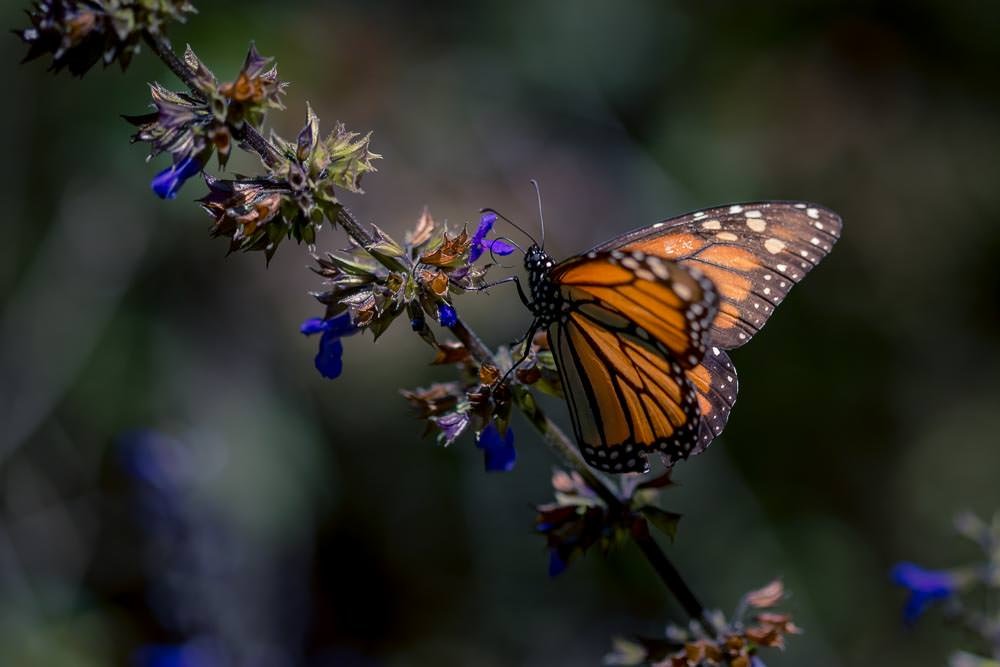
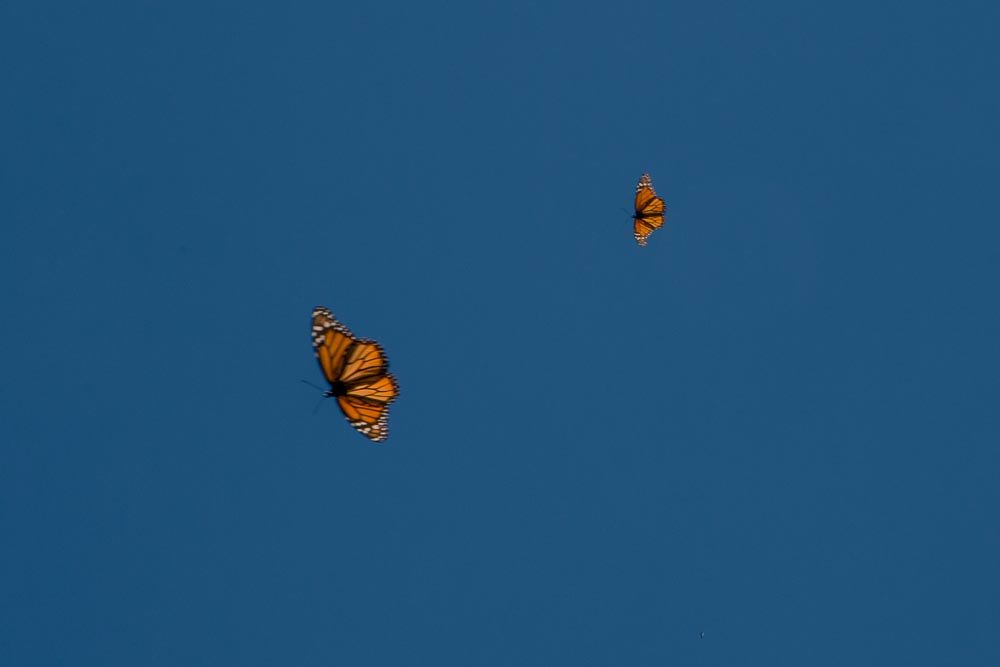

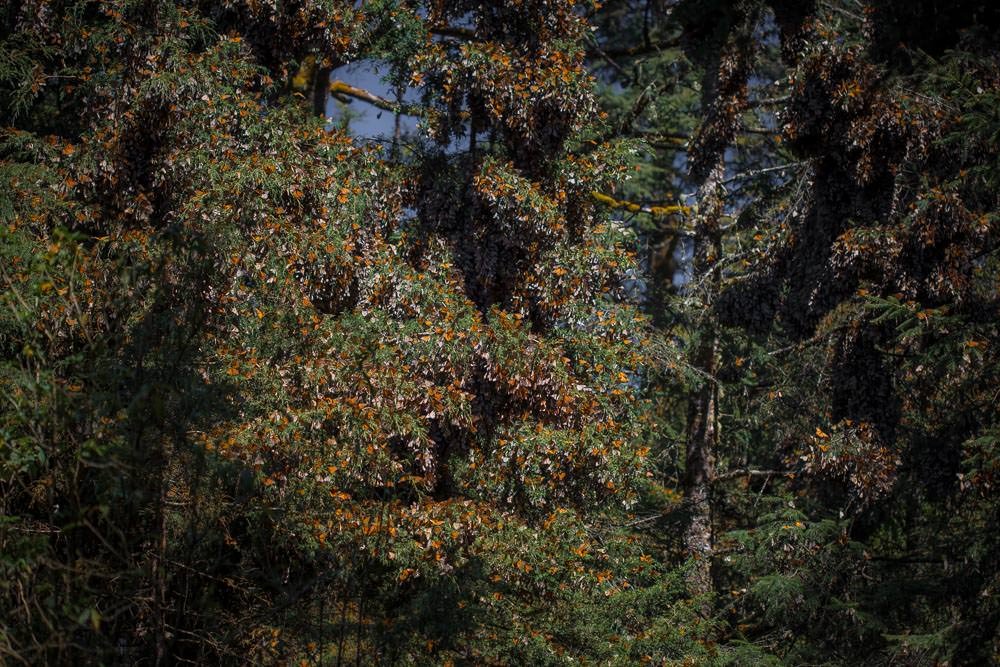
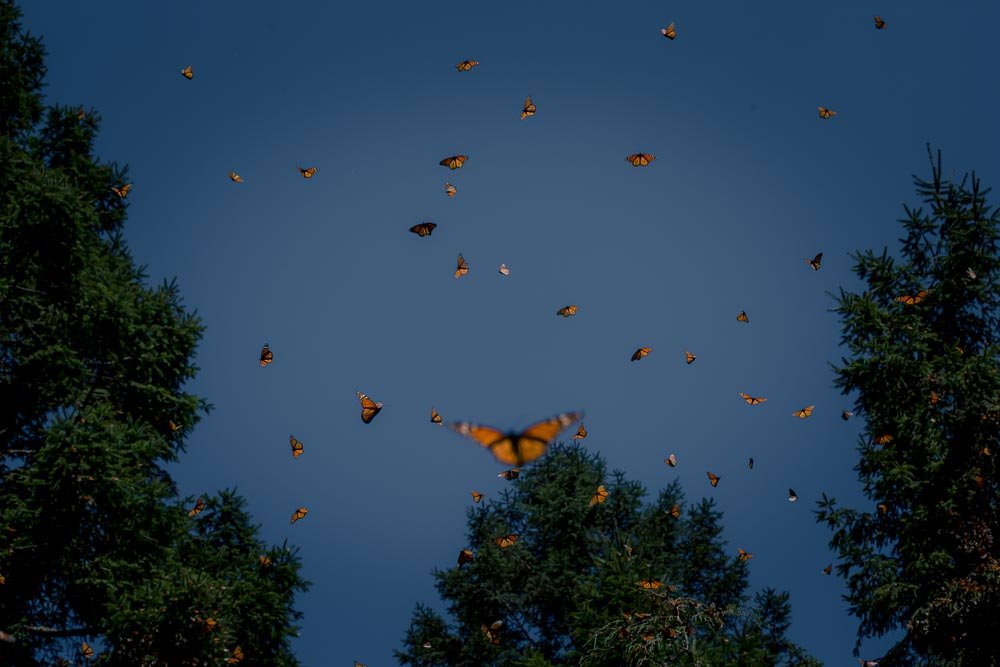
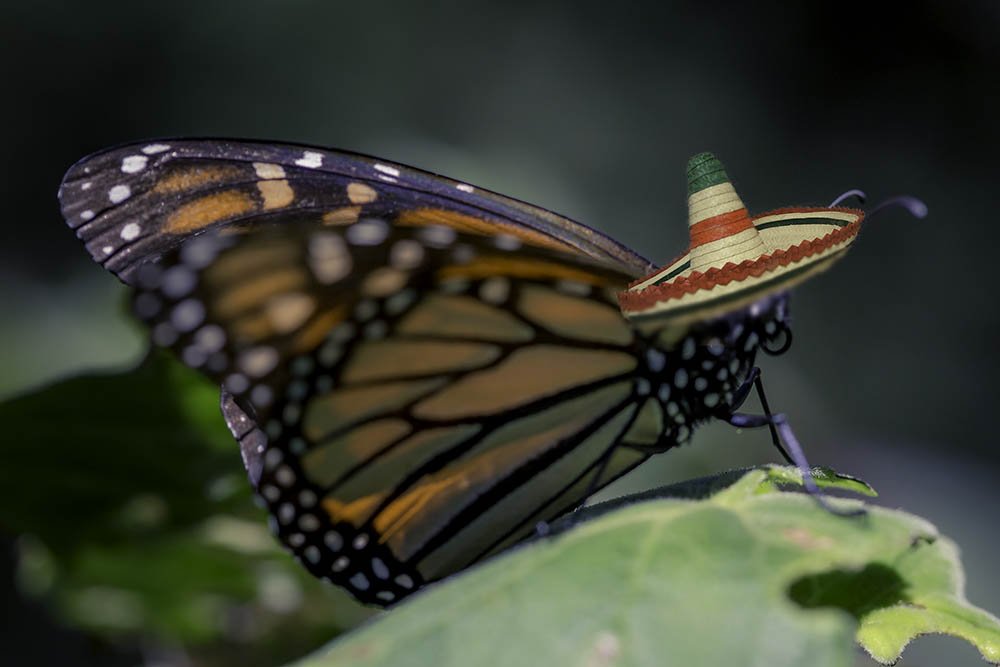






































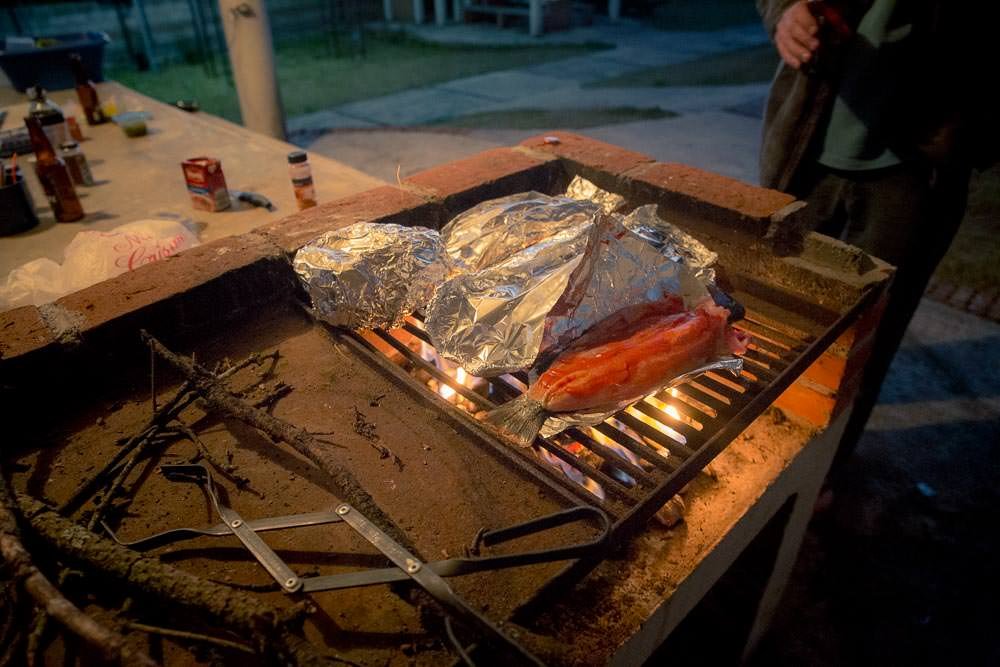


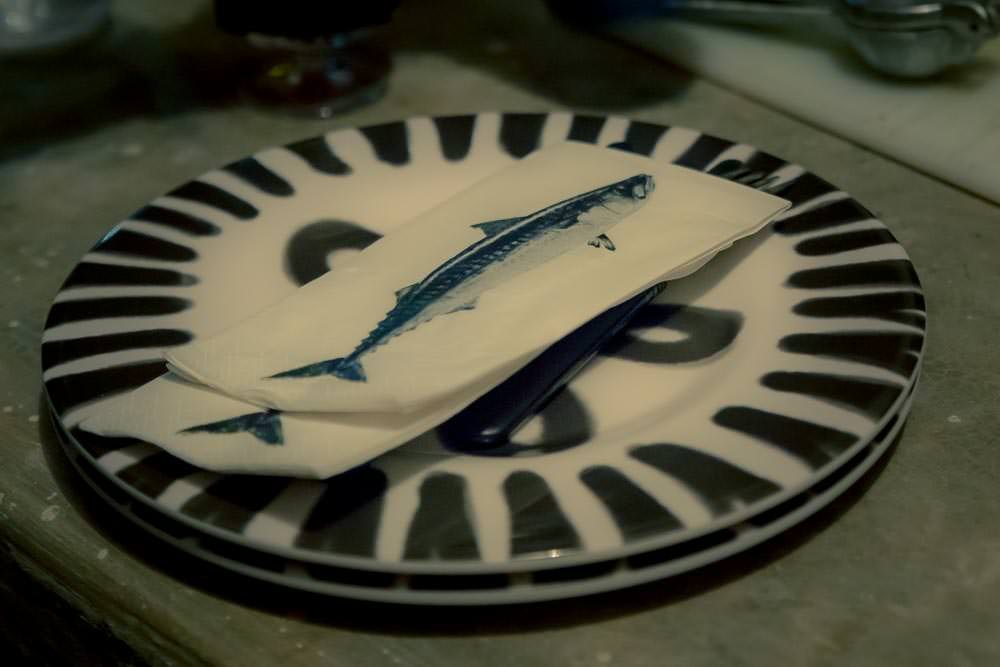


Karie
Love your butterfly pictures. How do you take those of a single butterfly among thousand blurry ones? Do tell.
Emma
That flying one was just luck by taking far too many photos, but the helpful answer is wide aperture (low F number), longer focal length (zoom in), focus on the foreground butterflies and hope for the best!
Pingback: Ancient ruins and the sounds of the apocalypse | Flightless Kiwis